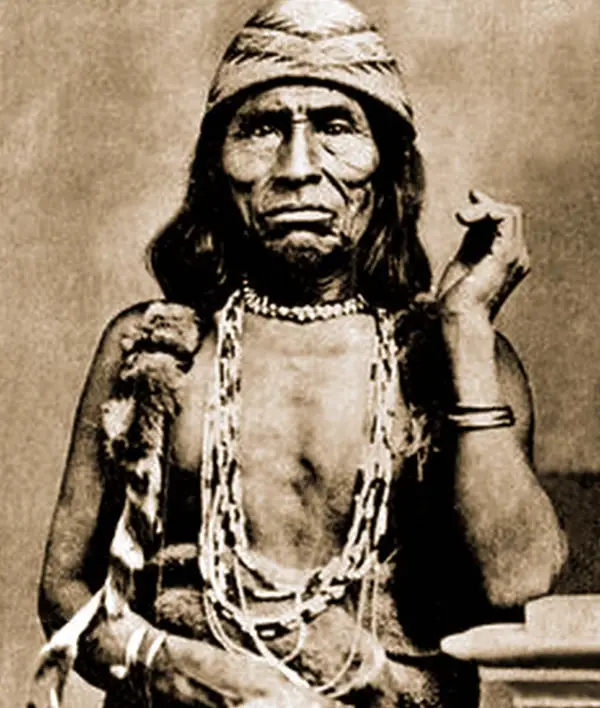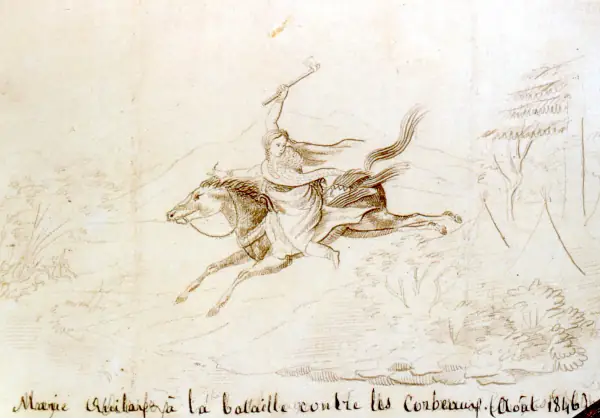ANTSS

Two-Spirit Ancestors:
Much of our Indigenous history has been lost to time. The carnage of colonization and attempts to eradicate our cultures has had a significant impact on the passing down of knowledge, which was traditionally in oral, not written, form. Despite this, we are still here. And some of our stories endure. Two-Spirit is a new term, but an ancient understanding. Here are just a few of our ancestors, whose stories somehow survived to inspire future generations.

Ozaawindib (Ojibwe) c. 1797-1832
Many Ojibwe warriors were transgendered and revered as “two-spirited”, or niizh manidoowag. The most well-known of these transgendered warriors was Ozaawindib, whom the Europeans called “Yellow Head.” In his 1830 book, author John Tanner describes Ozaawindib: “This man was one of those who make themselves women and are called women by the Indians.” Tanner also recalled that he was once the center of Ozaawindib’s affections. The warrior, who already had several husbands, possessed the role of a Makandwewininiwag, known as a “pillager”. These Ojibwe pillagers were much like the modern-era Marine Corps; the first to arrive on the scene of battle. Today, the legacy of this transgendered warrior can be seen in place names around Minnesota. Lake Itasca’s Yellow Head Point was named in their honor.

Old Doctor (Tolowa) c. 1805-1870s
Old Doctor was a Tolowa spiritual leader, who dressed in both male and female garments and jewelry. In the photo (c. 1873), Old Doctor is wearing a traditional women’s cap. They lived in a Yurok/Tolowa village, just north of Endert’s Beach (modern-day California), with a wife and son. Old Doctor disappeared in the wild, during a spiritual training for an accompanying boy. Neither body was ever found. It is speculated that the child may have died during the session. After such a death, the sponsor would be obliged to commit suicide. Exact causes of death were never confirmed.

Biawacheeitchish (Apsáalooke or Crow) c. 1806-1854
Biawacheeitchish (their English name is Woman Chief) was a leader with various identities. They showed a disposition toward traditionally male activities, but always dressing in traditionally female clothing. They were known by 3 different names in history: Biawacheeitchish, Woman Chief and possibly Pine Leaf. They were born to the Gros Ventres people, but adopted and raised as Crow. Being known as so many things, Biawacheeitchish was also an acclaimed marksman, hunter and rider. They had at least four female wives and joined the Council Of Chiefs, becoming one of the Crows’ most significant leaders. Despite successfully negotiating peace, they were killed by a warring party of Gros Ventres, the people of their birth.

Kuilix (Pend d’Oreille or Kalispel) c. 1810s-1880s
Kuilix was a 19th century Kalispel (Montana) warrior, whose name means “Red Shirt” or “Red One”, a reference to a British uniform coat she wore. Kuilix was known to dress partially in men’s clothing and was first into battle against a large party of Blackfeet in 1842. In 1846, they led a fight against the Crow, wielding only an axe, which is illustrated in the sketch. The caption reads: “A woman warrior’s swift about-face left the enemy stupefied.” Renowned for being nurturing and fearless, Kuilix was said to have survived into old age.

Lozen & Dahteste (Chiricahua Apache) c.1840-1889 & c. 1860-1955
Lozen was the sister of Geronimo’s right-hand man, Victorio. She was among the fiercest warriors, a medicine woman gifted with powerful visions. After her brother was killed in 1880, a distraught Lozen exacted her revenge on the U.S. Army in true warrior fashion: returning to the warpath quickly, purposefully and with deadly results. Her “battle buddy” was a scout, messenger and mediator called Dahteste, who was always nearby. She was married and fought alongside her husband, but her “battle buddy,” Lozen, was always nearby. After the surrender of Geronimo and his people, Lozen died of tuberculosis in 1889, while imprisoned in Alabama. Dahteste spent eight years as a prisoner of war at Fort Marion and 19 years at Fort Sill, Oklahoma. Upon her release, she relocated to Whitetail on the Mescalero Apache Reservation in New Mexico. Often seen in full regalia, she owned many sheep (a sign of wealth) and died peacefully in 1955 at the age of 95.

Buffalo Calf Road Woman (Northern Cheyenne) c. 1844-1879
Also known as Brave Woman, Buffalo Calf Road Woman is most famous for charging into a shower of bullets to rescue their brother (Comes In Sight) during the Battle Of The Rosebud. Nine days later, Buffalo Calf Road Woman fought alongside her spouse in the Battle Of The Little Bighorn, where she was credited by Northern Cheyenne storytellers to have struck the blow that knocked Lieutenant Colonel George Armstrong Custer off his horse before he was killed. Alternate gender roles for females existed among the Cheyenne and were referred to as hetanemane’o. These women joined war parties, participated in councils of men and often dressed for battle as men would—naked except for breechcloth.

We’wha (Zuni) c. 1849-1896
A Lhamana (Zuni Two-Spirit) from the area that is now New Mexico, We’wha was born a male-bodied person who wore a mix of women’s and men’s clothing. They performed tasks that were typically divided by gender roles, distinguished as both a weaver and potter as well as a hunter and spiritual leader. We’wha spoke English, struck up friendships with white outsiders, even traveling to Washington, D.C. in 1886 to meet President Grover Cleveland. Largely perceived as a cisgender woman, We’wha became the toast of the town on this trip and gained a degree of national celebrity as an ambassador for the Zuni people. After being imprisoned in 1892 for resisting US soldiers meddling with Zuni culture, We’wha walked 40 miles back to the reservation and returned to their former life: leading ceremonies, making pottery, weaving with the women and hunting with the men.

Osh-Tisch (Apsáalooke or Crow) 1854-1929
Osh-Tisch was a keeper of the Badé tradition—a male-bodied person in the Crow community who lived their daily life in a feminine role. Earning their name “Finds Them And Kills Them” in a fight against the Lakota, Osh-Tisch was a revered member of the tribe. By the 1880s, missionaries began persecuting Natives over their dating and marriage traditions, which were often in opposition to the Christian European standard of lifelong heterosexual monogamy. Osh-Tisch and other Two-Spirits became a target of the code and were imprisoned. But the Crow chiefs and warriors spoke out in support of Two-Spirit values. They pushed hard against U.S. federal agents, ultimately gaining the Badés’ release.

Muksamse’lapli (Klamath) c. 1860s-1910s
Muksamse’lapli, also known as White Cindy, was a two-spirit Klamath healer, who lived on a small ranch on the shore of Agency Lake, Oregon. Muksamse’lapli was assigned male at birth, but was referred to as she/her among fellow Klamath people. Her knowledge of healing and botany was sought after by botanists seeking knowledge of local plants.

Hastiin Klah (Diné) 1867-1937
Hastiin Klah was a master sand painter, chanter, weaver and healer. There are four genders in Diné tradition and Klah was considered a Nádleehi (or “one who changes”)—an individual who exhibits the characteristics ascribed to the opposite sex. According to historical sources, Klah is believed to have been intersex. Born in 1867 in the Bear Mountain area (now Fort Wingate, New Mexico), Klah traveled across the U.S. to showcase their arts at the 1893 World’s Columbian Exposition in Chicago. Klah single-handedly saved the Navajo weaving tradition in the face of religious persecution and co-founded the Wheelwright Museum of the American Indian in Santa Fe. Klah designed, curated and blessed its grounds, but passed away before the museum opened in 1937.

Kwerhame (Quechan) c. 1890
This photo, of a Quechan female two-spirit person or kwerhame, was taken in southern California in the early 1890s. Her name is not known, but she was reported to have been married to a woman. She is wearing a man’s breechcloth, with bow guards on her wrists. Her posture is typical of a Quechan man. Her jewelry indicates a position of wealth and high status.

Charlie the Weaver (Diné) c. 1893
Known only as Charlie the Weaver, they were an object of curiosity for US journalists that recognized their occupation as usually done by women of the tribe. Charlie was also known for wearing clothing that differed from both male and female styles. Only a few photos exist of Charlie, who is pictured here at their winter hogan in 1893.
